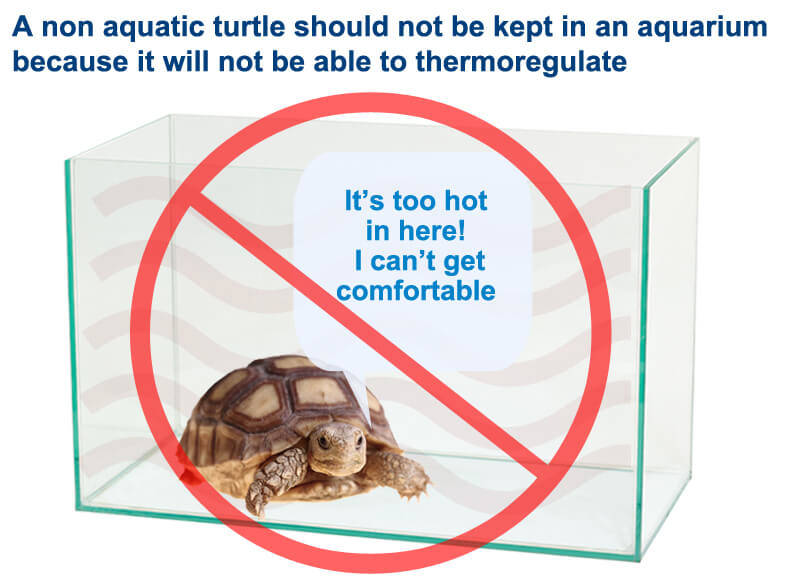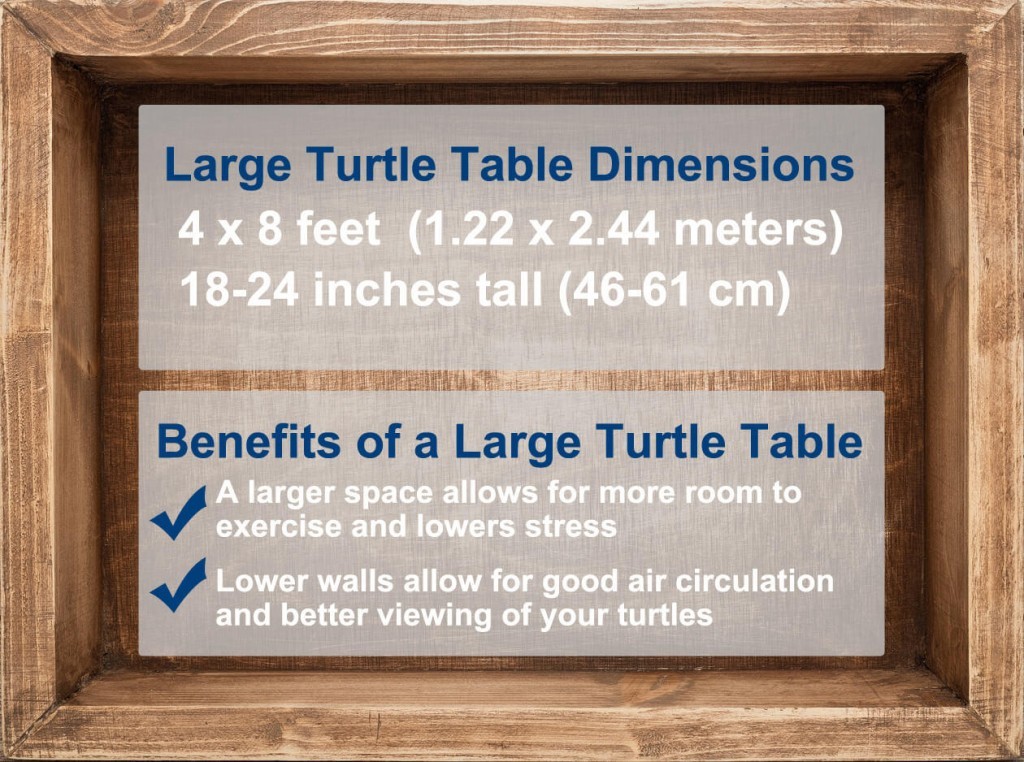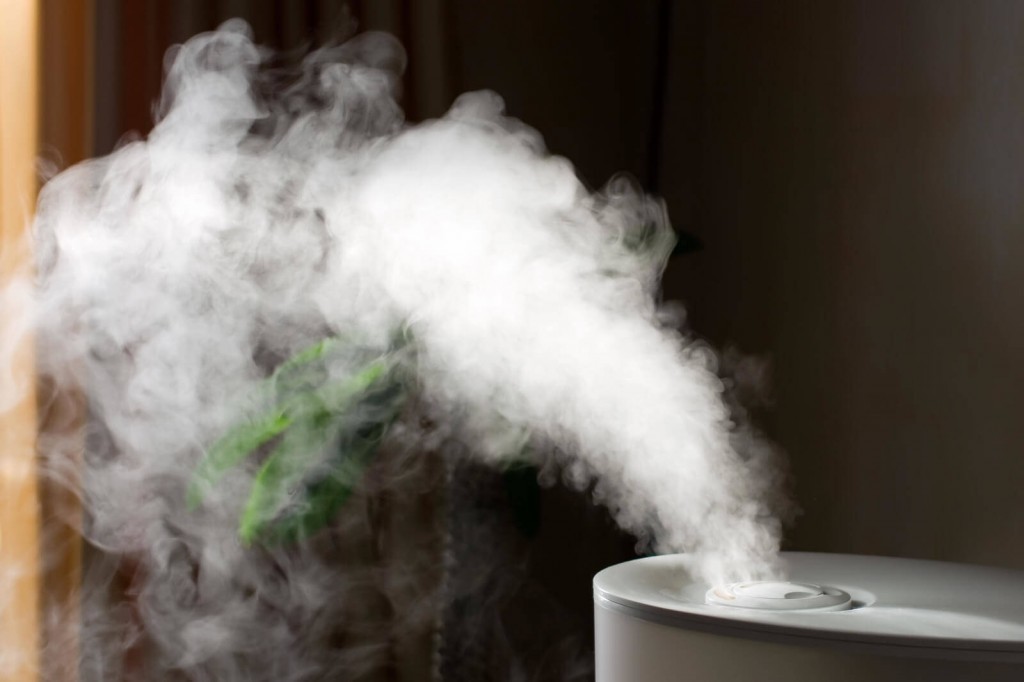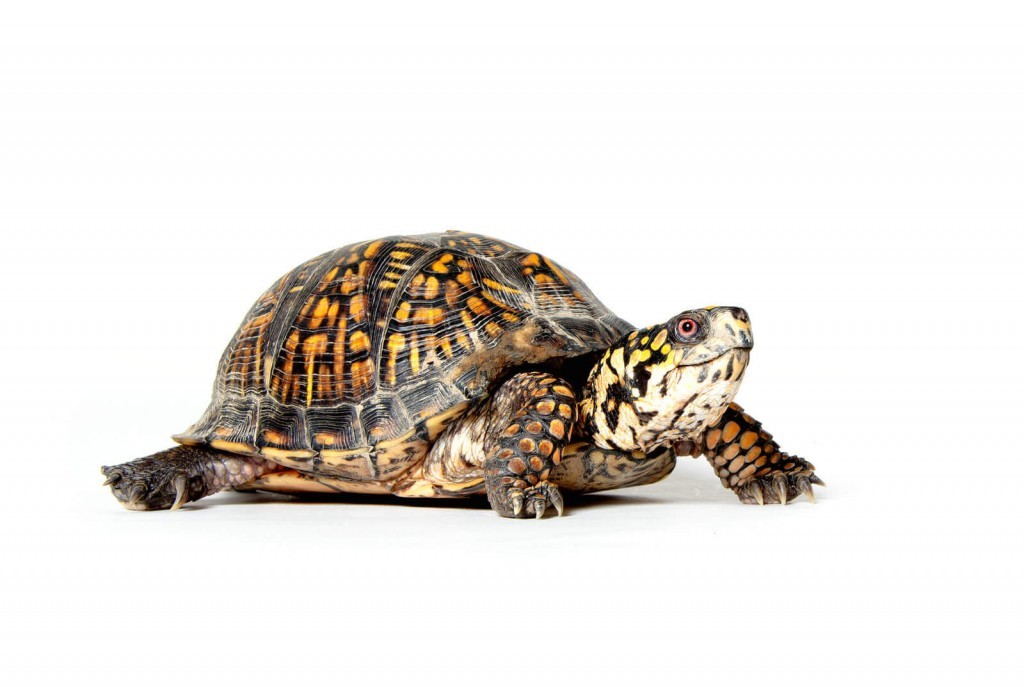Indoor Turtle Tables
If you don’t have the luxury of living in a warm climate year around or have a suitable yard to house your turtles or tortoises in an outdoor turtle pen, you will likely need to house them indoors permanently or for a few months over the winter. Many fully grown healthy turtles can be housed outdoors year around since they can hibernate during the cold months when temperatures drop into the 50s. Young juvenile or sick turtles and tortoises shouldn’t be left outside during cold days or allowed to hibernate; especially if they tropical species or originally from warmer climates.
Additionally, small turtles and sick turtles are more at risk of being killed by predators or illness. Therefore, it’s a good idea to setup a turtle habitat indoors where you can better control the temperature and humidity.
Turtle and Tortoise Table Basics
For non aquatic species like box turtles and tortoises should never be housed in a glass vivarium or turtle aquarium. The glass walls of these tanks make it difficult to create a temperature variation needed to allow a turtle to thermoregulate.
The glass helps trap the heat inside the tank and raises the inside air temperature to unhealthy levels. The transparency of the glass walls can also stresses out your pets as they will continue to walk through them to get out. Finally, you should avoid using a glass vivarium because they usually have poor ventilation and lead to higher rates of respiratory problems, lumpy shells and accelerated unhealthy growth.


What You Need to House a Turtle Indoors
Lighting
Tropical tortoise breeds don’t particularly like bright light and don’t require high intensity UV-B light. Tropical species can be fed a diet that include prey or carrion rich in vitamin D3 or oral supplements.
There are mercury vapor light bulbs that provide UV-A and UV-B and a good source of heat. You can find these lights and other lights suitable for turtles at pet stores in the reptile section. However, if you don’t have a particularly large turtle table, you should avoid getting a powerful light that puts off a lot of heat since it will be hard to create different temperature variations.
Get The Right Lights
Mercury Vapor Light Bulbs
Ceramic Infrared Lamps

Heat
Depending on your turtle’s habitat requirements you will need to create a temperature variation anywhere from 70*f to 95*f. Box turtles and tortoises enjoy basking under a heat lamp but you can also add heat by using some sort of heating pad that can be placed underneath your turtle’s tank. Heat lamps and overhead ceramic heaters need to be installed with care and made sure they are not resting on or close to any flammable materials.
During night periods, a ceramic heater can supply long wave infrared heat without emitting any light.
Humidity

Next you should partially cover the top opening of the table with a sheet of twin walled polycarbonate or another type of plastic to keep the moisture from evaporating. Finally you can add extra watering dishes or live plants. Live plants not only help increase humidity, they make the habitat look more natural (see the list of plants to avoid).
Get an Affordable Humidifier
Substrate
The best substrate for an indoor turtle table is one that you can easily change when soiled. Avoid using soil and in stead use coconut fibers or ground bark from fir trees. Pet stores offer a range of suitable options. For Box turtles and tropical species, these types of substrate are ideal since the absorb and hold moisture well. For tortoises however, you should use a sandy soil that stays dry. You can use things like seed trays to create substrate sections that can be easily removed and cleaned.
Water
All turtles and tortoises need a source of water to drink from even the desert tortoise species who don’t normally have access to water all the time in the wild. The best water dishes are those that your turtle can get into and take a soak and have a drink. These only need to be a few inches deep or not so deep that your turtle can’t easily stand in with it’s head well above the water line.
How to Build a Turtle Table
The instruction for this table is intended for tortoises or turtles that prefer a dry environment. Additions can be added to this basic setup to provide an adequate home for box turtles, semi aquatic Asian species or tropical tortoises who require higher humidity and or a larger source of water.
Materials List
To build a table that is 4 x 8 feet (1.22 x 2.44 meters) and 18-24 inches high (46-61 cm) you will need four boards of wood, a sheet of plywood, metal L brackets, aquarium sealant and a water proof finish. The boards should include two pieces that 8 feet long, 18-24 inches high and 1 inch thick; the other two boards should be 4 feet 2 inches long, 18-24 inches high and 1 inch thick. The plywood base should be a sturdy 8 x 4 feet sheet. The brackets should be the appropriate size to properly secure the walls and the screws should not be too long that they run through the other side of the 1 inch thick boards or plywood base.
Steps by Step Instructions
- Place the plywood sheet flat onto the surface you want to build the table on and then place the first 4′ 2″ up against the short side of the plywood so as to add the first wall. Don’t place the board onto the plywood but instead right up against the plywood. Make sure that each end of the wall sticks out past the plywood base by an inch.
- A few inches from both ends of the inside of the first wall, add L brackets. One edge of the L bracket should be flat onto the plywood base and the other up against the inside of the 4′ 2″ wall board.
- Do the same for the other short wall and then add the 8′ long walls. Work them in so they are butted up against the plywood base and up against the short walls so they flush with them.
- Secure the long walls with L brackets and add extra ones in the middle of the 8 foot walls if needed.
- Use a water proof, non toxic finish to paint the entire tortoise table, both inside and out.
- Use an aquarium sealant to run a bead along the four corner joints and along the plywood floor bottom. This will finish sealing the table and help keep any moisture from rotting the wood.
- You can then secure two post on opposite sides of the table with a board that runs from one post to the other. Lighting and heat lamps can be hung from this overhead board. Make sure the lights and especially the heat lamps are about 16-18 inches away from the substrate (avoid fires and electrocution by using the proper lighting fixtures and wiring).

Reviewed By: Tim Winter


Tim Winter has a strong affection for pets and wildlife. His years of experience caring for various types of pets has led him to share his knowledge with others on the best practices in pet care. Tim holds a Bachelor of Science from the University of Oregon School of Journalism and Communications.

I was only looking for what to feed turtles because i just got home from school and found a turtle in the street and i love turtles so i brought it home and it still needs a habitat and food.
To see what type of food it needs, see this post on food and diet and then use some of the advice found on this post to build your turtle a new home. If you don’t think you can care for it, you should release it back into the wild. That is, only if you think it is a turtle that was wild and not a pet someone let go. Normally you should leave them alone and let them be in the wild instead of taking it home. If you decide to keep it, you may want to take it to a vet for a checkup.